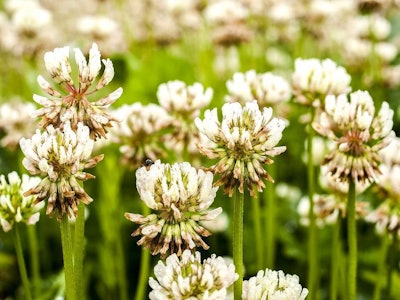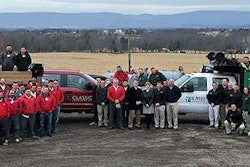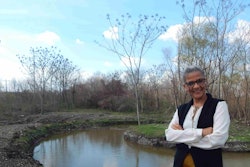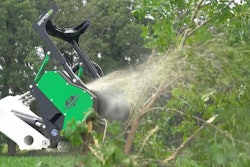 Photo: Pixabay
Photo: PixabayIt’s the time of year when white clover will soon begin to appear all around the yard. But some customers might not find it as appealing when present in their landscape.
These cool-season perennials go dormant in the winter and appear in full form in the spring, growing and spreading into the summer months. White clover reproduces by both seeds and creeping runners, and it is low-growing with leaves composed of three leaflets.
According to the University of Maryland Extension, white clover can actually be beneficial to a landscape because it takes nitrogen from the air, converts it to a form plants can use and releases it into the soil. This lessens the need to fertilize, and as an added bonus to some customers, pollinators are also attracted to the fluffy, white flowers.
Even though clover can prove to be an asset for yards, some customers may still dislike their look or the fact that they attract bees, especially if there are small children that will be out and about in the yard. While completely getting rid of clover can’t really be accomplished, limiting the spread can be with a few simple control methods.
Well-fed lawns and mowing heights
“The best defense is a good offense,” greatly applies when it comes to preventing the appearance of springtime white clover. White clover will typically appear in areas that aren’t properly fed, so providing grass with the nutrients it needs to grow thick and strong can help crowd out the weeds.
Customers may think that it’s common sense to take a mower at a low height and just take the clover down that way, but as you know, it’s more beneficial to raise the mowing height just a bit.
Since clover is low-growing with shallow roots, tell your customers that raising the mower height and letting the grass grow just a little bit taller will help block the sunlight. This will prevent the clover from growing.
Control methods
Pulling them up by hand or using appropriate weeding tools are the most commonly used methods of clover removal and doing so when the soil is moist makes the task much easier. White clover typically grows in clusters and when pulling them up by hand, be sure to pull out as much of the root system as possible to hinder regrowth. Be sure to pull them up sooner rather than later if this is your preferred removal method, as they will begin to spread rapidly.
If hand removal isn’t the avenue you want to take, chemical control can also prove effective.
Spot treating with liquid, selective, post-emergent or broadleaf weed killer can be applied when clover is actively growing, but be sure to choose a chemical that won’t harm the surrounding grass and plants and always follow the instructions on the label.
There are a few other alternatives you can use if you find your customers desiring a more organic method of removal. Mixing vinegar with a small amount of dish soap can be used for spot treatments, or consider covering the area with corn gluten meal. The corn gluten meal can also release organic dipeptides into the soil. This will dry out the seeds and make it more difficult for clover to sprout.
It’s recommended to use approximately 20 pounds of corn gluten meal per 1,000 square feet of lawn. After application, water the area well and let it dry naturally.
Some also recommend depriving the clovers of oxygen and sunlight by placing some sort of plastic sheet over the clover and securing the edges to keep it from blowing away. In a few weeks, the clover should be killed, but this method is typically used for larger patches, otherwise, the surrounding grass could be harmed as well.
Another idea for taking down clover is to give it an overabundance of nitrogen. A well-fertilized lawn can usually keep weeds at bay, so keeping nitrogen levels high can give you a leg up on clover control. Where there’s a lack of nitrogen, clovers thrive. Organic fertilizers may prove effective on smaller patches, but for large areas, it may be more beneficial to use standard, not slow release, fertilizers.










